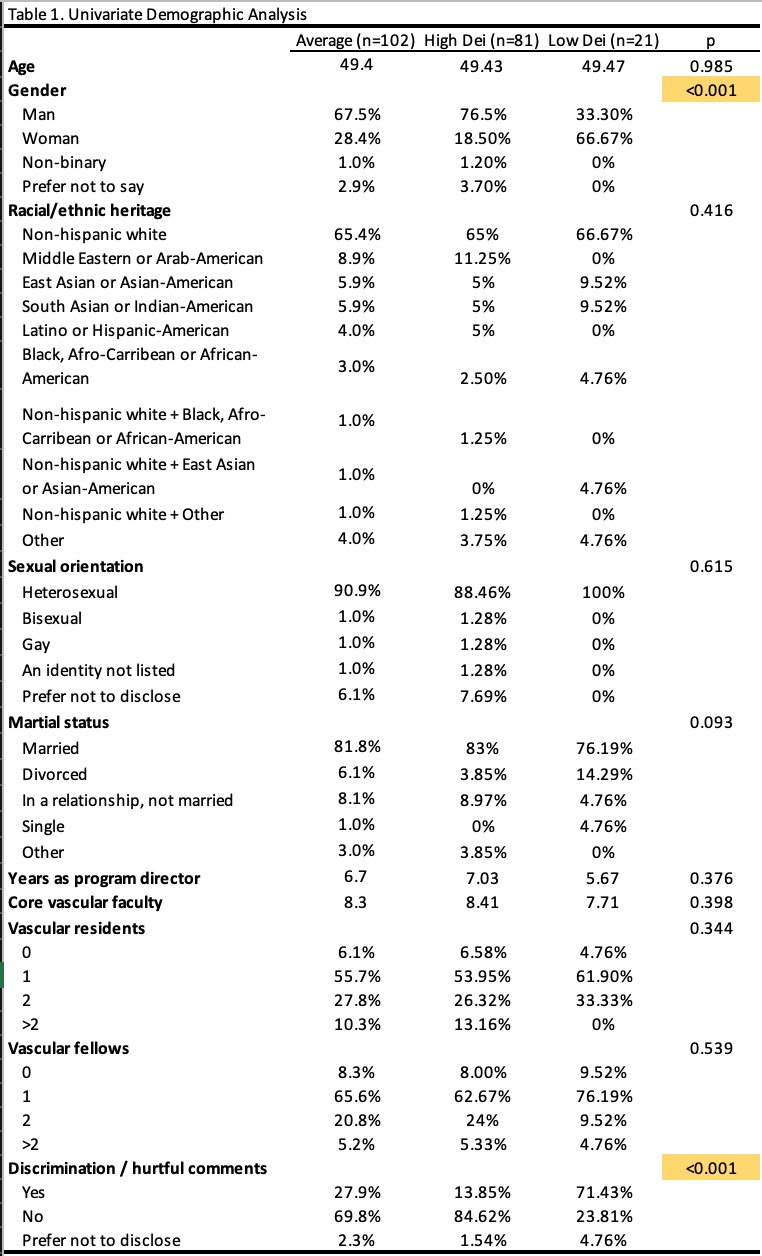Programmatic Engagement In Diversity, Equity, And Inclusion (DEI) In U.S. Vascular Surgery Training Programs
Saideep Bose, MD1, Bridget Kowalczyk1, Kwame Amankwah, MD2, Bernadette Aulivola, MD3, Matthew Smeds, MD1.
1Saint Louis University, Saint Louis, MO, USA, 2University of Connecticut, Farmington, CT, USA, 3Loyola University Medical Center, Chicago, IL, USA.
Objectives: There is an increasing call for medical centers to demonstrate that they themselves are diverse and inclusive. Historically, this has been measured by the composition of the workforce in terms of categories such as race, gender, and disability. However, these categories do a poor job of reflecting the actual ability of an organization to engage with a diverse workforce and patient population. The Diversity and Engagement Survery (DES) is a validated instrument designed to measure the integration of diversity, equity, and inclusion (DEI) within academic medical centers by examining questions in 8 subsets of DEI (common purpose, access to opportunity, equitable reward and recognition, cultural competence, trust, sense of belonging, appreciation of individual attributes, and respect). The goal of this study was to determine the predictors of low DEI in Vascular Surgery training programs.
Methods:An anonymous/electronic survey was sent to all program/assistant program directors of U.S. vascular surgery training programs (n=280). The DES was calculated and institutions were classified as low DEI if they scored in the bottom 25% percentile of overall scores. Univariate and multivariate analysis was used to determine if there were differences in demographics or survey responses between respondents reporting low DEI versus high DEI.
Results:There were a total of 102 (36.4% response rate) complete responses to the survey (Table 1). Programs nationally scored lowest in the DEI factor of “equitable reward and recognition” and highest in “respect.” There were a significantly higher proportion of women (66.67%) compared to men (33.30%) in the low DEI cohort, despite women comprising only 28.4% of the overall cohort (p<0.001). Furthermore, there was a significantly higher proportion of respondents who had experiences with discrimination or receiving hurtful comments in low DEI institutions (71.43%) vs high DEI institutions (13.85%, p < 0.001). The multivariate analysis confirmed that sex (p = 0.034) and experiences of discrimination (p=0.024) were independent, significant predictors for low DEI.
Conclusion:Vascular Surgery program directors reporting low DEI engagement were more likely to be female and to have experience discrimination at their institutions. Programs who struggle with DEI concepts may benefit from improving equitable reward and recognition of faculty. 
Back to 2022 Abstracts
